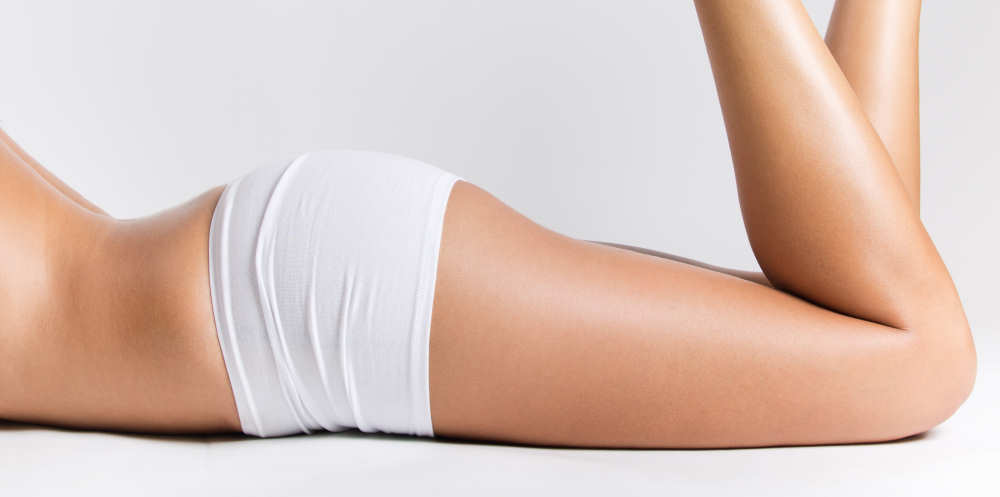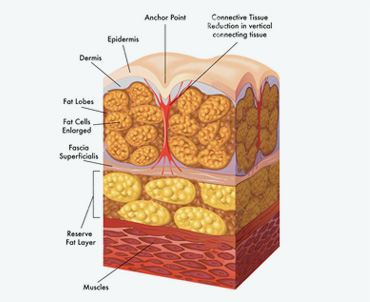
Lymphatic drainage for cellulite
by Cellulite Institute editorial staff

Lymphatic drainage for cellulite
Lymphatic drainage for cellulite is a massage technique that works on the lymphatic vessels to remove swelling, oedemas and cellulite.
It could therefore be the solution for relieving annoyances such as:
- Heavy legs
- Water retention
- Orange peel skin
- Oedema
Thanks to its action on the reabsorption of oedemas that cause alteration of adipose cells and all the visible symptoms of stagnation, lymphatic drainage for the treatment of cellulite enhances venous circulation, improves the appearance and tone of the skin as well as its temperature, and also causes relaxation of the muscle fibres.
When associated with a healthy lifestyle, it is a valid support for eliminating fluid accumulation and facilitating the disappearance of cellulite, especially in the early stage and in its oedematous and soft forms.
This massage is more beneficial than a relaxing massage, because its protocol aims to improve circulation of blood “return” in microcirculation and especially of the lymphatic system.
Lymphatic drainage for cellulite: what is the lymphatic system?
Due to fat accumulation and circulatory disorders, cellulite becomes visible with the classic “orange peel” skin. Problems related to the lymphatic system (poor lymph circulation) are also among the circulatory problems that cause this blemish.
The lymphatic system has various functions:
- draining interstitial fluid
- transporting food fats
- removing waste
- protecting the body against foreign substances
- is linked to functionality of the immune system
Lymphatic drainage is a gentle technique that stimulates the lymphatic system, thus facilitating the elimination of waste and toxins in the body.
It enables real purification of the body from toxins by increasing lymph flow.
Lymph is responsible for the distribution of nutrients and white blood cells in cells.
But this fluid also removes the body’s waste products.
Throughout its journey, which takes 48 hours, lymph passes through the lymph nodes in the:
- Groin
- Elbows
- Neck
- Behind the knees
- Armpits
- Lymph node chains in the thoracic and abdominal cavity
What are lymph nodes for?
To filter and eliminate toxins.
Unlike blood which is pumped by cardiac activity, the lymphatic system does not have a “motor”. Lymphatic circulation can therefore sometimes slow down, resulting in toxins stagnating in the body.
This accumulation is one of the causes of the appearance of cellulite as widespread oedemas in the body.
How many types of lymphatic drainage exist?
Lymphatic drainage can be of 2 types:
- Manual
- Mechanical
Manual lymphatic drainage: performed in a special room. It can be performed on the whole body or only on the legs. The massage therapist helps the lymph improve its circulation.
Mechanical lymphatic drainage: some centres offer mechanical drainage. Therefore, you are no longer in the hands of a professional but of a machine. Pressotherapy, for example, is a type of mechanical lymphatic massage.
Drainage massage helps alleviate:
- Sensations of fatigue
- Heavy legs
- Stress
In addition, lymphatic drainage has a positive effect on mood.
Finally, after lymphatic drainage, there is often an improvement in the quality of sleep.
Performing lymphatic drainage is not recommended in cases of:
- Infections in an acute phase
- Suspected neoplasm
- Dermatitis on the skin to be treated
You should always ask for your doctor’s opinion; there may be other health-related issues for which drainage massage is not recommended.
Lymphatic drainage for cellulite: who to contact?
Anti-cellulite massage should be performed by expert professionals; overly intense movements should be avoided in order to prevent the risk of breaking the capillaries, whereas the touch of the hands and fingers must be gentle and prolonged, in order to stimulate:
- Superficial blood circulation
- Lymphatic system
Lymphatic drainage for cellulite: how does lymphatic drainage work?
Lymphatic drainage is a rather delicate massage because lymph vessels are very superficial.
The skin is massaged following the direction of the lymphatic circulation, always from the bottom up.
The movements should be loose and rhythmic, applying slight pressure on the skin, moving in the direction of the nearest lymph node and then releasing.
The motion is repeated 5 times on the same area. This sequence of manoeuvres allows the lymphatic circulation to be stimulated and increased and thus drains accumulated toxins.
Lymphatic drainage for cellulite: why does it work?
Excess fat is not the only culprit in the appearance of cellulite.
Fluid retention also aggravates the situation.
Poor drainage causes:
- Water retention
- Cellulite
Lymphatic massage can adequately remove water and toxins.
By accelerating lymphatic circulation, you:
- Stimulate lymphatic drainage
- Reduce water retention
Elimination of toxins and water retained in the body will automatically improve the appearance of the skin, which will be smooth and elastic.
The figure will be remodelled.
Lymphatic drainage for cellulite: after treatment
The sensations after drainage are of lightness and well-being.
The lymph accumulated in the tissues due to heaviness and swelling can benefit from lymphatic drainage which gives a feeling of well-being and lightness.
The following are recommended for facilitating lymphatic drainage of the body:
- Proper hydration
- Balanced diet
- Practising regular physical activity
Recommended activities include:
- Walking at a steady pace
- Swimming
- Fitness activities in water
Cellulite is difficult to eliminate permanently.
To combat and remove cellulite, it is best to combine multiple treatments, including lymphatic drainage for cellulite.



